My last article [2] documented the funding of the March 1917 Revolution in Russia.[1] The primary financier of the Russian revolutionary movement 1905–1917 was Jacob Schiff, of Kuhn Loeb and Co., New York. In particular Schiff had provided the money for the distribution of revolutionary propaganda among Russians prisoners-of-war in Japan in 1905 by the American journalist George Kennan who, more than any other individual, was responsible for turning American public and official opinion against Czarist Russia. Kennan subsequently related that it was thanks to Schiff that 50,000 Russian soldiers were revolutionized and formed the cadres that laid the basis for the March 1917 Revolution and, we might add–either directly or indirectly–the consequent Bolshevik coup of November. The reaction of bankers from Wall Street and The City towards the overthrow of the Czar was enthusiastic.
This article deals with the funding of the subsequent Bolshevik coup eight months later which, as paradoxical as it might seem to those who know nothing of history other than the orthodox version, was also greeted cordially by banking circles in Wall Street and elsewhere.
Apologists for the bankers and other highly-placed individuals who supported the Bolsheviks from the earliest stages of the communist takeover, either diplomatically or financially, justify the support for this mass application of psychopathology as being motivated by patriotic sentiment, in trying to thwart German influence over the Bolsheviks and to keep Russia in the war against Germany. Because Lenin and his entourage had been able to enter Russia courtesy of the German High Command on the basis that a Bolshevik regime would withdraw Russia from the war, Wall Street capitalists explained that their patronage of the Bolsheviks was motivated by the highest ideals of pro-Allied sentiment. Hence, William Boyce Thompson in particular stated that by funding Bolshevik propaganda for distribution in Germany and Austria this would undermine the war effort of those countries, while his assistance to the Bolsheviks in Russia was designed to swing them in favor of the Allies.
These protestations of patriotic motivations ring hollow. International banking is precisely what it is called–international, or globalist as such forms of capitalism are now called. Not only have these banking forms and other forms of big business had overlapping directorships and investments for generations, but they are often related through intermarriage. While Max Warburg of the Warburg banking house in Germany advised the Kaiser and while the German Government arranged for funding and safe passage of Lenin and his entourage from Switzerland across Germany to Russia;[2] his brother Paul,[3] a partner of Jacob Schiff’s at Wall Street, looked after the family interests in New York. The primary factor that was behind the bankers’ support for the Bolsheviks whether from London,[4] New York, Stockholm,[5] or Berlin, was to open up the underdeveloped resources of Russia to the world market, just as in our own day George Soros, the money speculator, funds the so-called “color revolutions” to bring about “regime change” that facilitates the opening up of resources to global exploitation. Hence there can no longer be any doubt that international capital a plays a major role in fomenting revolutions, because Soros plays the well-known modern-day equivalent of Jacob Schiff.
Recognition of Bolsheviks Pushed by Bankers
This aim of international finance, whether centered in Germany, England or the USA, to open up Russia to capitalist exploitation by supporting the Bolsheviks, was widely commented on at the time by a diversity of well-informed sources, including Allied intelligence agencies, and of particular interest by two very different individuals, Henry Wickham Steed, editor of The London Times, and Samuel Gompers, head of the American Federation of Labor.
On May 1, 1922 The New York Times reported that Gompers, reacting to negotiations at the international economic conference at Genoa, declared that a group of “predatory international financiers” were working for the recognition of the Bolshevik regime for the opening up of resources for exploitation. Despite the rhetoric by New York and London bankers during the war that a Russian revolution would serve the Allied cause, Gompers opined that this was an “Anglo-American-German banking group,” and that they were “international bankers” who did not adhere to any national allegiance. He also noted that prominent Americans who had a history of anti-labor attitudes were advocating recognition of the Bolshevik regime.[6]
What Gompers claimed, was similarly expressed by Henry Wickham Steed of The London Times, based on his observations. In a first-hand account of the Paris Peace Conference of 1919, Steed stated that proceedings were interrupted by the return from Moscow of William C. Bullitt and Lincoln Steffens, “who had been sent to Russia towards the middle of February by Colonel House and Mr. Lansing, for the purpose of studying conditions, political and economic, therein for the benefit of the American Commissioners plenipotentiary to negotiate peace.”[7] Steed also refers to British Prime Minister Lloyd George as being likely to have known of the Mission and its purpose. Steed stated that international finance was behind the move for recognition of the Bolshevik regime and other moves in favor of the Bolsheviks, and specifically identified Jacob Schiff of Kuhn, Loeb & Co., New York, as one of the principal bankers “eager to secure recognition”:
Potent international financial interests were at work in favor of the immediate recognition of the Bolshevists. Those influences had been largely responsible for the Anglo-American proposal in January to call Bolshevist representatives to Paris at the beginning of the Peace Conference—a proposal which had failed after having been transformed into a suggestion for a Conference with the Bolshevists at Prinkipo. . . . The well-known American Jewish banker, Mr. Jacob Schiff, was known to be anxious to secure recognition for the Bolshevists . . .[8]
In return for diplomatic recognition, Tchitcherin, the Bolshevist Commissary for Foreign Affairs, was offering “extensive commercial and economic concessions.”
Wickham Steed with the support of The Times’ proprietor, Lord Northcliffe, exposed the machinations of international finance to obtain the recognition of the Bolshevik regime, which still had a very uncertain future.
Steed related that he was called upon by US President Wilson’s primary adviser, Edward Mandel House, who was concerned at Steed’s exposé of the relationship between Bolshevists and international financers:
That day Colonel House asked me to call upon him. I found him worried both by my criticism of any recognition of the Bolshevists and by the certainty, which he had not previously realized, that if the President were to recognize the Bolshevists in return for commercial concessions his whole “idealism” would be hopelessly compromised as commercialism in disguise. I pointed out to him that not only would Wilson be utterly discredited but that the League of Nations would go by the board, because all the small peoples and many of the big peoples of Europe would be unable to resist the Bolshevism which Wilson would have accredited.[9]
Steed stated to House that it was Jacob Schiff, Warburg and other bankers who were behind the diplomatic moves in favor of the Bolsheviks:
I insisted that, unknown to him, the prime movers were Jacob Schiff, Warburg, and other international financiers, who wished above all to bolster up the Jewish Bolshevists in order to secure a field for German and Jewish exploitation of Russia.[10]
Steed here indicates an uncharacteristic naïveté in thinking that House would not have known of the plans of Schiff, Warburg, et al. House was throughout his career close to these bankers and was involved with them in setting up a war-time think tank called The Inquiry, and following the war the creation of the Council on Foreign Relations, in order to shape an internationalist post-war foreign policy. It was Schiff and Paul Warburg and other Wall Street bankers who called on House in 1913 to get House’s support for the creation of the Federal Reserve Bank.[11]
House in Machiavellian manner asked Steed to compromise; to support humanitarian aid supposedly for the benefit of all Russians. Steed agreed to consider this, but soon after talking with House found out that British Prime Minister Lloyd George and Wilson were to proceed with recognition the following day. Steed therefore wrote the leading article for the Paris Daily Mail of March 28th, exposing the maneuvers and asking how a pro-Bolshevik attitude was consistent with Pres. Wilson’s declared moral principles for the post-war world?
. . . Who are the tempters that would dare whisper into the ears of the Allied and Associated Governments? They are not far removed from the men who preached peace with profitable dishonour to the British people in July, 1914. They are akin to, if not identical with, the men who sent Trotsky and some scores of associate desperadoes to ruin the Russian Revolution as a democratic, anti-German force in the spring of 1917.[12]
Here Steed does not seem to have been aware that some of the same bankers who were supporting the Bolsheviks had also supported the March Revolution.
Charles Crane,[13] who had recently talked with President Wilson, told Steed that Wilson was about to recognize the Bolsheviks, which would result in a negative public opinion in the USA and destroy Wilson’s post-War internationalist aims. Significantly Crane also identified the pro-Bolshevik faction as being that of Big Business, stating to Steed: “Our people at home will certainly not stand for the recognition of the Bolshevists at the bidding of Wall Street.” Steed was again seen by House, who stated that Steed’s article in the Paris Daily Mail, “had got under the President’s hide.” House asked that Steed postpone further exposés in the press, and again raised the prospect of recognition based on humanitarian aid. Lloyd George was also greatly perturbed by Steed’s articles in the Daily Mail and complained that he could not undertake a “sensible” policy towards the Bolsheviks while the press had an anti-Bolshevik attitude.[14]
Thompson and the American Red Cross Mission
As mentioned, House attempted to persuade Steed on the idea of relations with Bolshevik Russia ostensibly for the purpose of humanitarian aid for the Russian people. This had already been undertaken just after the Bolshevik Revolution, when the regime was far from certain, under the guise of the American Red Cross Mission. Col. William Boyce Thompson, a director of the NY Federal Reserve Bank, organized and largely funded the Mission, with other funding coming from International Harvester, which gave $200,000. The so-called Red Cross Mission was largely comprised of business personnel, and was according to Thompson’s assistant, Cornelius Kelleher, “nothing but a mask” for business interests.[15] Of the 24 members, five were doctors and two were medical researchers. The rest were lawyers and businessmen associated with Wall Street. Dr. Billings nominally headed the Mission.[16] Prof. Antony Sutton of the Hoover Institute stated that the Mission provided assistance for revolutionaries:
We know from the files of the U.S. embassy in Petrograd that the U.S. Red Cross gave 4,000 rubles to Prince Lvoff, president of the Council of Ministers, for “relief of revolutionists” and 10,000 rubles in two payments to Kerensky for “relief of political refugees.”[17]
The original intention of the Mission, hastily organized by Thompson in light of revolutionary events, was ‘”nothing less than to shore up the Provisional regime,” according to the historian William Harlane Hale, formerly of the United States Foreign Service.[18] The support for the social revolutionaries indicates that the same bankers who backed the Kerensky regime and the March Revolution also supported the Bolsheviks, and it seems reasonable to opine that these financiers considered Kerensky a mere prelude for the Bolshevik coup, as the following indicates.
Thompson set himself up in royal manner in Petrograd reporting directly to Pres. Wilson and bypassing US Ambassador Francis. Thompson provided funds from his own money, first to the Social Revolutionaries, to whom he gave one million rubles,[19] and shortly after $1,000,000 to the Bolsheviks to spread their propaganda to Germany and Austria.[20] Thompson met Thomas Lamont of J. P. Morgan Co. in London to persuade the British War Cabinet to drop its anti-Bolshevik policy. On his return to the USA Thompson undertook a tour advocating US recognition of the Bolsheviks.[21] Thompson’s deputy Raymond Robbins had been pressing for recognition of the Bolsheviks, and Thompson agreed that the Kerensky regime was doomed and consequently “sped to Washington to try and swing the Administration onto a new policy track,” meeting resistance from Wilson, who was being pressure by Ambassador Francis.[22]
The “Bolshevik of Wall Street”
Such was Thompson’s enthusiasm for Bolshevism that he was nicknamed “the Bolshevik of Wall Street” by his fellow plutocrats. Thompson gave a lengthy interview with The New York Times just after his four month tour with the American Red Cross Mission, lauding the Bolsheviks and assuring the American public that the Bolsheviks were not about to make a separate peace with Germany.[23] The article is an interesting indication of how Wall Street viewed their supposedly “deadly enemies,” the Bolsheviks, at a time when their position was very precarious. Thompson stated that while the “reactionaries,” if they assumed power, might seek peace with Germany, the Bolsheviki would not. “His opinion is that Russia needs America, that America must stand by Russia,” stated the Times. Thompson is quoted: “The Bolsheviki peace aims are the same as those of the Untied States.” Thompson alluded to Wilson’s speech to the United States Congress on Russia as “a wonderful meeting of the situation,” but that the American public “know very little about the Bolsheviki.” The Times stated:
Colonel Thompson is a banker and a capitalist, and he has large manufacturing interests. He is not a sentimentalist nor a “radical.” But he has come back from his official visit to Russia in absolute sympathy with the Russian democracy as represented by the Bolsheviki at present.
Hence at this time Thompson was trying to sell the Bolsheviks as “democrats,” implying that they were part of the same movement as the Kerensky regime that they had overthrown. While Thompson did not consider Bolshevism the final form of government, he did see it as the most promising step towards a “representative government” and that it was the “duty” of the USA to “sympathize” with and “aid” Russia “through her days of crisis.” He stated that in reply to surprise at his pro-Bolshevik sentiments he did not mind being called “red” if that meant sympathy for 170,000,000 people “struggling for liberty and fair living.” Thompson also saw that while the Bolsheviki had entered a “truce” with Germany, they were also spreading Bolshevik doctrines among the German people, which Thompson called “their ideals of freedom” and their “propaganda of democracy.” Thompson lauded the Bolshevik Government as being the equivalent to America’s democracy, stating:
The present government in Russia is a government of workingmen. It is a Government by the majority, and, because our Government is a government of the majority, I don’t see how it can fail to support the Government of Russia.
Thompson saw the prospects of the Bolshevik Government being transformed as it incorporated a more Centrist position and included employers. If Bolshevism did not proceed thus, then “God help the world,” warned Thompson. Given that this was a time when Lenin and Trotsky held sway over the regime, subsequently to become the most enthusiastic advocates of opening Russia up to foreign capital (New Economic Policy) prospects seemed good for a joint Capitalist-Bolshevik venture with no indication that an upstart named Stalin would throw a spanner in the works.
The Times article ends: “At home in New York, the Colonel has received the good-natured title of ‘the Bolshevik of Wall Street.’”[24] It was against this background that it can now be understood why labor leader Samuel Gompers denounced Bolshevism as a tool of “predatory international finance,” while arch-capitalist Thompson lauded it as “a government of working men.”
The Council on Foreign Relations Report
The Council on Foreign Relations (CFR) had been established in 1921 by President Wilson’s chief adviser Edward Mandel House out of a previous think tank called The Inquiry, formed in 1917–1918 to advise President Wilson on the Paris Peace Conference of 1919. It was this conference about which Steed had detailed his observations when he stated that there were financial interests trying to secure the recognition of the Bolsheviks.[25]
Peter Grose in his semi-official history of the CFR writes of it as a think tank combining academe and big business that had emerged from The Inquiry group.[26] Therefore the CFR report on Soviet Russia at this early period is instructive as to the relationship that influential sections of the US Establishment wished to pursue in regard to the Bolshevik regime. Grosse writes of this period:
Awkward in the records of The Inquiry had been the absence of a single study or background paper on the subject of Bolshevism. Perhaps this was simply beyond the academic imagination of the times. Not until early 1923 could the Council summon the expertise to mobilize a systematic examination of the Bolshevik regime, finally entrenched after civil war in Russia. The impetus for this first study was Lenin’s New Economic Policy, which appeared to open the struggling Bolshevik economy to foreign investment. Half the Council’s study group were members drawn from firms that had done business in pre-revolutionary Russia, and the discussions about the Soviet future were intense. The concluding report dismissed “hysterical” fears that the revolution would spill outside Russia’s borders into central Europe or, worse, that the heady new revolutionaries would ally with nationalistic Muslims in the Middle East to evict European imperialism. The Bolsheviks were on their way to “sanity and sound business practices,” the Council study group concluded, but the welcome to foreign concessionaires would likely be short-lived. Thus, the Council experts recommended in March 1923 that American businessmen get into Russia while Lenin’s invitation held good, make money on their investments, and then get out as quickly as possible. A few heeded the advice; not for seven decades would a similar opportunity arise.[27]
However, financial interests had already moved into Soviet Russia from the beginning of the Bolshevik regime.
The Vanderlip Concession
H. G. Wells, historian, novelist, and Fabian-socialist, observed first-hand the relationship between Communism and big business when he had visited Bolshevik Russia. Travelling to Russia in 1920 where he interviewed Lenin and other Bolshevik leaders, Wells hoped that the Western Powers and in particular the USA would come to the Soviets’ aid. Wells also met there “Mr. Vanderlip” who was negotiating business contracts with the Soviets. Wells commented of the situation he would like to see developing, and as a self-described “collectivist” made a telling observation on the relationship between Communism and “Big Business”:
The only Power capable of playing this role of eleventh-hour helper to Russia single-handed is the United States of America. That is why I find the adventure of the enterprising and imaginative Mr. Vanderlip very significant. I doubt the conclusiveness of his negotiations; they are probably only the opening phase of a discussion of the Russian problem upon a new basis that may lead it at last to a comprehensive world treatment of this situation. Other Powers than the United States will, in the present phase of world-exhaustion, need to combine before they can be of any effective use to Russia. Big business is by no means antipathetic to Communism. The larger big business grows the more it approximates to Collectivism. It is the upper road of the few instead of the lower road of the masses to Collectivism.[28]
In addressing concerns that were being expressed among Bolshevik Party “activists” at a meeting of the Moscow Organization of the party, Lenin sought to reassure them that the Government was not selling out to foreign capitalism, but that, in view of what Lenin believed to be an inevitable war between the USA and Japan, a US interest in Kamchatka would be favorable to Soviet Russia as a defensive position against Japan. Such strategic considerations on the part of the US, it might be added, were also more relevant to US and other forms of so-called “intervention” during the Russian Civil War between the Red and the White Armies, than any desire to help the Whites overturn the Bolsheviks, let alone restore Czarism. Lenin said of Vanderlip to the Bolshevik cadres:
We must take advantage of the situation that has arisen. That is the whole purpose of the Kamchatka concessions. We have had a visit from Vanderlip, a distant relative of the well-known multimillionaire, if he is to he believed; but since our intelligence service, although splendidly organized, unfortunately does not yet extend to the United States of America, we have not yet established the exact kinship of these Vanderlips. Some even say there is no kinship at all. I do not presume to judge: my knowledge is confined to having read a book by Vanderlip, not the one that was in our country and is said to be such a very important person that he has been received with all the honors by kings and ministers—from which one must infer that his pocket is very well lined indeed. He spoke to them in the way people discuss matters at meetings such as ours, for instance, and told then in the calmest tones how Europe should be restored. If ministers spoke to him with so much respect, it must mean that Vanderlip is in touch with the multimillionaires.[29]
Of the meeting with Vanderlip, Lenin indicated that it was based on a secret diplomacy that was being denied by the US Administration, while Vandrelip returned to the USA, like other capitalists such as Thompson, praising the Bolsheviks. Lenin continued:
. . . I expressed the hope that friendly relations between the two states would be a basis not only for the granting of a concession, but also for the normal development of reciprocal economic assistance. It all went off in that kind of vein. Then telegrams came telling what Vanderlip had said on arriving home from abroad. Vanderlip had compared Lenin with Washington and Lincoln. Vanderlip had asked for my autographed portrait. I had declined, because when you present a portrait you write, “To Comrade So-and-so,” and I could not write, “To Comrade Vanderlip.” Neither was it possible to write: “To the Vanderlip we are signing a concession with” because that concession agreement would be concluded by the Administration when it took office. I did not know what to write. It would have been illogical to give my photograph to an out-and-out imperialist. Yet these were the kind of telegrams that arrived; this affair has clearly played a certain part in imperialist politics. When the news of the Vanderlip concessions came out, Harding—the man who has been elected President, but who will take office only next March—issued an official denial, declaring that he knew nothing about it, had no dealings with the Bolsheviks, and had heard nothing about any concessions. That was during the elections, and, for all we know, to confess, during elections, that you have dealings with the Bolsheviks may cost you votes. That was why he issued an official denial. He had this report sent to all the newspapers that are hostile to the Bolsheviks and are on the pay roll of the imperialist parties . . .[30]
This mysterious Vanderlip was in fact Washington Vanderlip who had, according to Armand Hammer, come to Russia in 1919, although even Hammer does not seem to have known much of the matter.[31] Lenin’s rationalizations in trying to justify concessions to foreign capitalists to the “Moscow activists” in 1920 seem disingenuous and less than forthcoming. Washington Vanderlip was an engineer whose negotiations with Russia drew considerable attention in the USA. The New York Times wrote that Vanderlip, speaking from Russia, denied reports of Lenin’s speech to “Moscow activists” that the concessions would serve Bolshevik geopolitical interests, with Vanderlip declaring that he had established a common frontier between the USA and Russia and that trade relations must be immediately restored.[32] The New York Times reporting in 1922: “The exploration of Kamchatka for oil as soon as trade relations between this country and Russia are established was assured today when the Standard Oil Company of California purchased one-quarter of the stock in the Vanderlip syndicate.” This gave Standard Oil exclusive leases on any syndicate lands on which oil was found. The Vanderlip syndicate comprised sixty-four units. The Standard Oil Company has just purchased sixteen units. However, the Vanderlip concessions could not come into effect until Soviet Russia was recognized by the USA.[33]
The Vanderlip syndicate holds concessions for the exploitation of coal, oil, and timber lands, fisheries, etc., east of the 160th parallel in Kamchatka. The Russian Government granted the syndicate alternate sections of land there and will draw royalties amounting to approximately 5 percent on all products developed and marketed by the syndicate.[34]
It is little wonder then that US capitalists were eager to see the recognition of the Soviet regime.
Bolshevik Bankers
In 1922 Soviet Russia’s first international bank was created, Ruskombank, headed by Olof Aschberg of the Nye Banken, Stockholm, Sweden. The predominant capital represented in the bank was British. The foreign director of Ruskombank was Max May, vice president of the Guaranty Trust Company.[35] Similarly to “the Bolshevik of Wall Street,” William Boyce Thompson, Aschberg was known as the “Bolshevik banker” for his close involvement with banking interests that had channeled funds to the Bolsheviks.
Guaranty Trust Company became intimately involved with Soviet economic transactions. A Scotland Yard Intelligence Report stated as early as 1919 the connection between Guaranty Trust and Ludwig C. A. K. Martens, head of the Soviet Bureau in New York when the bureau was established that year.[36] When representatives of the Lusk Committee investigating Bolshevik activities in the USA raided the Soviet Bureau offices on May 7, 1919, files of communications with almost a thousand firms were found. Basil H. Thompson of Scotland Yard in a special report stated that despite denials, there was evidence in the seized files that the Soviet Bureau was being funded by Guaranty Trust Company.[37] The significance of the Guaranty Trust Company was that it was part of the J. P. Morgan economic empire, which Dr. Sutton shows in his study to have been a major player in economic relations with Soviet Russia from its early days. It was also J. P. Morgan interests that predominated in the formation of a consortium, the American International Corporation (AIC), which was another source eager to secure the recognition of the still embryonic Soviet state. Interests represented in the directorship of the American International Corporation (AIC) included: National City Bank; General Electric; Du Pont; Kuhn, Loeb and Co.; Rockefeller; Federal Reserve Bank of New York; Ingersoll-Rand; Hanover National Bank, etc.[38]
The AIC’s representative in Russia at the time of the revolutionary tumult was its executive secretary William Franklin Sands, who was asked by US Secretary of State Robert Lansing for a report on the situation and what the US response should be. Sands’ attitude toward the Bolsheviks was, like that of Thompson, enthusiastic. Sands wrote a memorandum to Lansing in January 1918, at a time when the Bolshevik hold was still far from sure, that there had already been too much of a delay by the USA in recognizing the Bolshevik regime such as it existed. The USA had to make up for “lost time,” and like Thompson, Sands considered the Bolshevik Revolution to be analogous to the American Revolution.[39] In July 1918 Sands wrote to US Treasury Secretary McAdoo that a commission should be established by private interests with government backing, to provide “economic assistance to Russia.”[40]
Armand Hammer
One of those closely associated with Ludwig Martens and the Soviet Bureau was Dr. Julius Hammer, an emigrant from Russia who was a founder of the Communist Party USA. There is evidence that Julius Hammer was the host to Leon Trotsky when the latter with his family arrived in New York in 1917, and that it was Dr. Hammer’s chauffeured car that provided transport to Natalia and the Trotsky children. The Trotskys were met on disembarkation at the New York dock by Arthur Concors, a director of the Hebrew Sheltering and Immigrant Aid Society, whose advisory board included Jacob Schiff of Kuhn, Loeb and Co.[41] Dr. Hammer was the “primary owner of Allied Drug and Chemical Co.,” and “one of those not so rare creatures, a radical Marxist turned wealthy entrepreneur,” who lived an opulent lifestyle, according to Professor Spence.[42] Another financier linked to Trotsky was his own uncle, banker Abram Zhivotovskii, who was associated with numerous financial interests including those of Olof Aschberg.[43]
The intimate association of the Hammer family with Soviet Russia was to be maintained from start to finish, with an interlude of withdrawal during the Stalinist period. Julius’ son Armand, chairman of Occidental Petroleum Corporation, was the first foreigner to obtain commercial concessions from the Soviet Government. Armand was in Russia in 1921 to arrange for the reintroduction of capitalism according to the new economic course set by Lenin, the New Economic Policy. Lenin stated to Hammer that the economies of Russia and the USA were complementary, and in exchange for the exploitation of Russia’s raw materials he hoped for America’s technology.[44] This was precisely the attitude of significant business interests in the West. Lenin stated to Hammer that it was hoped the New Economic Policy would accelerate the economic process “by a system of industrial and commercial concessions to foreigners. It will give great opportunities to the United States.”[45]
Hammer met Trotsky, who asked him whether “financial circles” in the USA regard Russia as a desirable field of investment? Trotsky continued:
Inasmuch as Russia had its Revolution, capital was really safer there than anywhere else because, “whatever should happen abroad, the Soviet would adhere to any agreements it might make. Suppose one of your Americans invest money in Russia. When the Revolution comes to America, his property will of course be nationalized, but his agreement with us will hold good and he will thus be in a much more favorable position than the rest of his fellow capitalists.[46]
The manner by which Russia fundamentally changed direction, resulting eventually in the Cold War when Stalin refused to continue the wartime alliance for the purposes of establishing a World State via the United Nations Organization, traces its origins back to the divergence of opinion, among many other issues, between Trotsky and Stalin in regard to the role of foreign investment in the Soviet Union.[47] The CFR report had been prescient in warning big business to get into Russia immediately lest the situation changed radically.
Regimented Labor
But for the moment, with Trotsky entrenched as the warlord of Bolshevism, and Lenin favorable towards international capital investment, events in Russia seemed to be promising. A further major factor in the enthusiasm certain capitalist interests had for the Bolsheviks was the regimentation of labor under the so-called “dictatorship of the proletariat.” The workers’ state provided foreign capitalists with a controlled workforce. Trotsky had stated:
The militarization of labor is the indispensable basic method for the organization of our labor forces. . . . Is it true that compulsory labor is always unproductive? . . . This is the most wretched and miserable liberal prejudice: chattel slavery too was productive. . . . Compulsory slave labor was in its time a progressive phenomenon. Labor obligatory for the whole country, compulsory for every worker, is the basis of socialism. . . . Wages must not be viewed from the angle of securing the personal existence of the individual worker [but should] measure the conscientiousness, and efficiency of the work of every laborer.[48]
Hammer related of his experiences in the young Soviet state that although lengthy negotiations had to be undertaken with each of the trades unions involved in an enterprise, “the great power and influence of the trade unions was not without its advantages to the employer of labor in Russia. Once the employer had signed a collective agreement with the union branch there was little risk of strikes or similar trouble.”
Breaches of the codes as negotiated could result in dismissal, with recourse by the sacked worker to a labor court which, in Hammer’s experience, did not generally find in the worker’s favor, which would mean that there would be little chance of the sacked worker getting another job.[49]
However, Trotsky’s insane run in the Soviet Union was short-lived. As for Hammer, despite his greatly expanding and diverse businesses in the Soviet Union, after Stalin assumed power Hammer packed up and left, not returning until Stalin’s demise. Hammer opined decades later:
I never met Stalin—I never had any desire to do so—and I never had any dealings with him. However it was perfectly clear to me in 1930 that Stalin was not a man with whom you could do business. Stalin believed that the state was capable of running everything without the support of foreign concessionaires and private enterprise. That is the main reason I left Moscow. I could see that I would soon be unable to do business there and, since business was my sole reason to be there, my time was up.[50]
Foreign capital did nonetheless continue to do business with the USSR[51] as best as it was able, but the promising start that capitalists saw in the March and November revolutions for a new Russia that would replace the antiquated Czarist system with a modern economy from which they could reap the rewards was, as the 1923 CFR report warned, short-lived. Gorbachev and Yeltsin provided a brief interregnum of hope for foreign capital, to be disappointed again with the rise of Putin and a revival of nationalism and opposition to the oligarchs. The policy of continuing economic relations with the USSR even during the era of the Cold War was promoted as a strategy in the immediate aftermath of World War II when a CFR report by George S Franklin recommended attempting to work with the USSR as much as possible, “unless and until it becomes entirely evident that the U.S.S.R. is not interested in achieving cooperation . . .”
The United States must be powerful not only politically and economically, but also militarily. We cannot afford to dissipate our military strength unless Russia is willing concurrently to decrease hers. On this we lay great emphasis.
We must take every opportunity to work with the Soviets now, when their power is still far inferior to ours, and hope that we can establish our cooperation on a firmer basis for the not so distant future when they will have completed their reconstruction and greatly increased their strength. . . . The policy we advocate is one of firmness coupled with moderation and patience.[52]
Since Putin, the CFR again sees Russia as having taken a “wrong direction.” The current recommendation is for “selective cooperation” rather than “partnership, which is not now feasible.”[53]
The Revolutionary Nature of Capital
Should the fact that international capital viewed the March and even the November Revolutions with optimism be seen as an anomaly of history? Oswald Spengler was one of the first historians to expose the connections between capital and revolution. In The Decline of the West he called socialism “capitalistic” because it does not aim to replace money-based values, “but to possess them.” H. G. Wells, it will be recalled, said something similar. Spengler stated of socialism that it is “nothing but a trusty henchman of Big Capital, which knows perfectly well how to make use of it.” He elaborated in a footnote, seeing the connections going back to antiquity:
Herein lies the secret of why all radical (i.e. poor) parties necessarily become the tools of the money-powers, the Equites, the Bourse. Theoretically their enemy is capital, but practically they attack, not the Bourse, but Tradition on behalf of the Bourse. This is as true today as it was for the Gracchuan age, and in all countries . . .[54]
It was the Equites, the big-money party, which made Tiberius Gracchu’s popular movement possible at all; and as soon as that part of the reforms that was advantageous to themselves had been successfully legalized, they withdrew and the movement collapsed.[55]
From the Gracchuan Age to the Cromwellian and the French Revolutions, to Soros’ “color revolutions” of today, the Russian Revolutions were neither the first nor the last of political upheavals to serve the interests of Money Power in the name of “the people.”
Notes
[1] K. R. Bolton, “March 1917: Wall Street & the March 1917 Russian Revolution,” Ab Aeterno, No. 2 (March 2010).
[2] Michael Pearson, The Sealed Train: Journey to Revolution: Lenin–1917 (London: Macmillan, 1975).
[3] Paul Warburg, prior to immigrating to the USA, had been decorated by the Kaiser in 1912.
[4] Col. William Wiseman, head of the British Secret Service, was the British equivalent to America’s key presidential adviser, Edward House, with whom he was in constant communication. Wiseman became a partner in Kuhn, Loeb & Co. From London on May 1, 1918 Wiseman cabled House that the Allies should intervene at the invitation of the Bolsheviks and help organize the Bolshevik army then fighting the White Armies in a bloody Civil War at a time when the Bolshevik hold on Russia was doubtful (Edward M. House, ed. Charles Seymour, The Intimate Papers of Col. House [New York: Houghton, Mifflin Co., 1926], Vol. III, p. 421).
[5] Olof Aschberg of the Nye Banken, Stockholm, the so-called “Bolshevik banker” who became head of the first Soviet international bank, Ruskombank, channeled funds to the Bolsheviks. On September 6, 1948 The London Evening Star commented on Aschberg’s visit to Swiss bankers that he had “advanced large sums to Lenin and Trotsky in 1917. At the time of the revolution Mr. Aschberg gave Trotsky money to form and equip the first unit of the Red Army.”
[7] Henry Wickham Steed, “Through Thirty Years 1892–1922 A personal narrative,” The Peace Conference, The Bullitt Mission, Vol. II. (New York: Doubleday Page and Co., 1924), p. 301.
[11] Charles Seymour, 165–66. House was assigned by Wilson to draw up the constitution for the League of Nations, and in 1918 formed a think tank at Wilson’s request, called The Inquiry, to advise on post-war policy, which became the Council on Foreign Relations. House was the US chief negotiator at the Peace Conference in Paris, 1919–1920.
[12] Henry Wickham Steed, “Peace with Honor,” Paris Daily Mail, 28 March 1922; quoted in Steed (1924).
[13] Crane was a member of a 1917 Special Diplomatic Mission to Russia, and a member of the American Section of the Paris Peace Conference in 1919.
[14] H. W. Steed, 1924, op. cit.
[15] Antony Sutton, Wall Street and the Bolshevik Revolution (New York: Arlington House Publishers, 1974), p. 71.
[18] William Harlan Hale, “When the Red Storm Broke,” America and Russia: A Century and a Half of Dramatic Encounters, ed. Oliver Jensen (New York: Simon and Schuster, 1962), p. 150.
[20] “Gives Bolsheviki a Million,” Washington Post, 2 February 1918, cited by Sutton, ibid., pp. 82–83.
[21] A. Sutton, op.cit., p. 8.
[22] W. Harlan Hale, op.cit., p. 151.
[23] Trotsky while still in the USA had made similar claims. “People War Weary. But Leo Trotsky Says They Do Not Want Separate Peace,” New York Times, March 16, 1917. This was why he became the focus of British intelligence efforts via R. H. Bruce Lockhart, special agent to the British War Cabinet in Russia.
[24] “Bolsheviki Will Not Make Separate Peace: Only Those Who Made Up Privileged Classes Under Czar Would Do So, Says Col. W. B. Thompson, Just Back From Red Cross Mission,” New York Times, January 27, 1918.
[25] Robert S. Rifkind, ‘”The Wasted Mission,” America and Russia, op. cit., p. 180.
[26] Peter Grose, Continuing The Inquiry: The Council on Foreign Relations from 1921 to 1996 (New York: Council on Foreign Relations, 2006). The entire book can be read online at: Council on Foreign Relations: http://www.cfr.org/about/history/cfr/index.html [4] (Accessed on February 27, 2010).
[27] Ibid. Chapter: “Basic Assumptions.”
[28] H. G. Wells, Russia in the Shadows, Chapter VII, “The Envoy.” Wells went to Russia in September 1920 at the invitation of Kamenev, of the Russian Trade Delegation in London, one of the leaders of the Bolshevik regime. Russia in the Shadows appeared as a series of articles in The Sunday Express. The whole book can be read online at: gutenberg.net.au/ebooks06/0602371h.html [5]
[31] A. Hammer, Witness to History (Reading, England: Hodder and Stoughton, 1988), pp.151-152.
[32] “Vanderlip’s Empire,” The New York Times, December 1, 1920, 14.
[33] “Standard Oil Joins Vanderlip Project,” The New York Times, January 11, 1922, p. 1.
[35] Antony Sutton, Wall Street and the Bolshevik Revolution (New York: Arlington House Publishers, 1974), pp. 62–63.
[36] “Scotland Yard Intelligence Report,” London 1919, US State Dept. Decimal File, 316-22-656, cited by A. Sutton, ibid., p. 113.
[37] Basil H. Thompson, British Home Office Directorate of Intelligence, “Special Report No. 5 (Secret),” Scotland Yard, London, July 14, 1919; cited by Sutton, ibid., p. 115.
[38] A Sutton, op.cit., pp. 130–31.
[39] Sands’ memorandum to Lansing, p. 9; cited by Sutton, ibid., pp. 132, 134.
[40] A. Sutton, ibid., p. 135.
[41] Richard B Spence, “Hidden Agendas: Spies, Lies and Intrigue Surrounding Trotsky’s American Visit, January-April 1917,” Revolutionary Russia, Vol. 21, #1 (2008).
[44] A. Hammer, Witness to History, op. cit., p. 143.
[49] A. Hammer, op. cit., p. 217.
[51] Charles Levinson, Vodka-Cola (West Sussex: Biblias, 1980). Antony Sutton, National Suicide: Military Aid to the Soviet Union (New York: Arlington House, 1973).
[53] Jack Kemp, et al., Russia’s Wrong Direction: What the United States Can and Should do, Independent Task Force Report, no. 57 (New York: Council on Foreign Relations, 2006) xi. The entire publication can be downloaded at: http://www.cfr.org/publication/9997/ [10]
[54] Oswald Spengler, The Decline of The West (London: George Allen & Unwin, 1971), Vol. 2, p. 464.
[55] Ibid., p. 402.
Source: Ab Aeterno, no. 5, Fall 2010
 In 1975, Aleksandr Solzhenitsyn excised the several Lenin chapters from his massive and unfinished Red Wheel epic and compiled them into one volume entitled Lenin in Zürich. At the time, only one of these chapters had been published — in Knot I of the Red Wheel, known as August 1914 — while the remaining chapters would still have to languish in the author’s desk drawer for decades before appearing as part of The Red Wheel proper (November 1916 and March 1917, specifically). In order to save time and make an impression on his contemporaries, many of whom in the West still harbored misplaced sympathies for Lenin, Solzhenitsyn decided to share with the world his eye-opening and unforgettable treatment of the Soviet Revolutionary.
In 1975, Aleksandr Solzhenitsyn excised the several Lenin chapters from his massive and unfinished Red Wheel epic and compiled them into one volume entitled Lenin in Zürich. At the time, only one of these chapters had been published — in Knot I of the Red Wheel, known as August 1914 — while the remaining chapters would still have to languish in the author’s desk drawer for decades before appearing as part of The Red Wheel proper (November 1916 and March 1917, specifically). In order to save time and make an impression on his contemporaries, many of whom in the West still harbored misplaced sympathies for Lenin, Solzhenitsyn decided to share with the world his eye-opening and unforgettable treatment of the Soviet Revolutionary.
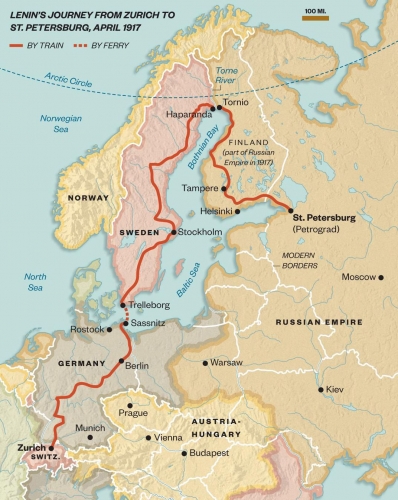
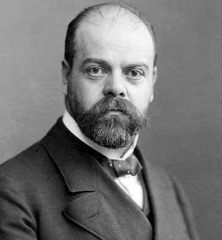 A man known as Parvus appears foremost among the Jews in Lenin in Zürich. Born Izrail Lazarevich Gelfand, he comes across, at least to Lenin, as an enigmatic and somewhat unscrupulous capitalist and millionaire who, for some reason, dedicates his life to socialist causes. Either this, or he wishes to destroy Russia while exhibiting a suspicious allegiance to Germany. Parvus, along with his protégé Leon Trotsky, had tried and failed to overthrow the Tsar in 1905, and now offers a new plan: With his deep contacts in the German government, he will arrange for the Bolsheviks’ to travel through Germany in order to re-enter Russia where they can foment revolution against a weakened Tsar. This would serve not only Lenin but Parvus’ German friends as well by knocking Russia out of the war. Suspicious of Parvus’ outsider status, and especially of his tolerance of Lenin’s detested Mensheviks, Lenin at first refuses. However, he cannot shake his respect and fascination for this mysterious benefactor.
A man known as Parvus appears foremost among the Jews in Lenin in Zürich. Born Izrail Lazarevich Gelfand, he comes across, at least to Lenin, as an enigmatic and somewhat unscrupulous capitalist and millionaire who, for some reason, dedicates his life to socialist causes. Either this, or he wishes to destroy Russia while exhibiting a suspicious allegiance to Germany. Parvus, along with his protégé Leon Trotsky, had tried and failed to overthrow the Tsar in 1905, and now offers a new plan: With his deep contacts in the German government, he will arrange for the Bolsheviks’ to travel through Germany in order to re-enter Russia where they can foment revolution against a weakened Tsar. This would serve not only Lenin but Parvus’ German friends as well by knocking Russia out of the war. Suspicious of Parvus’ outsider status, and especially of his tolerance of Lenin’s detested Mensheviks, Lenin at first refuses. However, he cannot shake his respect and fascination for this mysterious benefactor.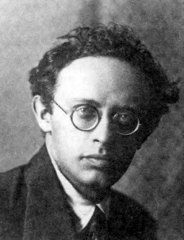 Another Jew who figures prominently in Lenin in Zürich is Radek (born Karl Berngardovich Sobelsohn). Lenin has tremendous respect for Radek as a writer and propagandist — that Radek had become one of the Soviet Union’s most prominent journalists years after Lenin’s death certainly justifies Lenin’s esteem. In all, he is clever and resourceful and the only person to whom Lenin would voluntarily surrender his pen. After the February Revolution in Russia, as Lenin prepares for travel back to his home country according to Parvus’ plan, Radek contrives ingenious solutions to formidable logistical problems that threaten to sink the enterprise. This makes Lenin, for one of the few times in the book, truly happy.
Another Jew who figures prominently in Lenin in Zürich is Radek (born Karl Berngardovich Sobelsohn). Lenin has tremendous respect for Radek as a writer and propagandist — that Radek had become one of the Soviet Union’s most prominent journalists years after Lenin’s death certainly justifies Lenin’s esteem. In all, he is clever and resourceful and the only person to whom Lenin would voluntarily surrender his pen. After the February Revolution in Russia, as Lenin prepares for travel back to his home country according to Parvus’ plan, Radek contrives ingenious solutions to formidable logistical problems that threaten to sink the enterprise. This makes Lenin, for one of the few times in the book, truly happy.




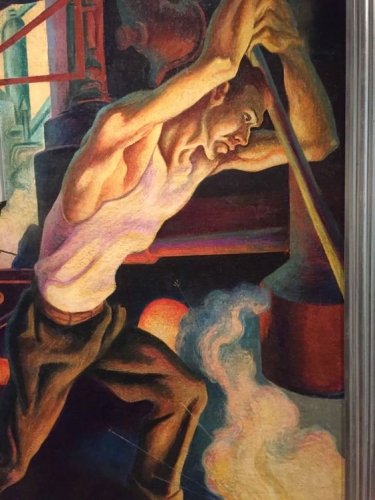
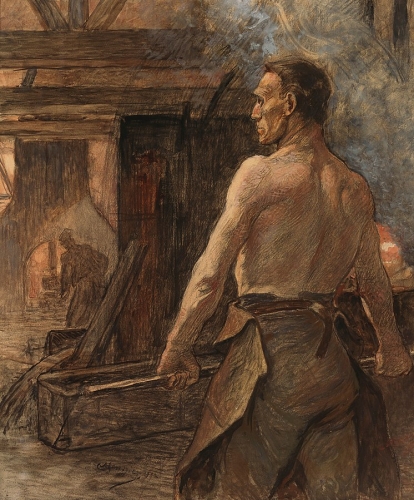
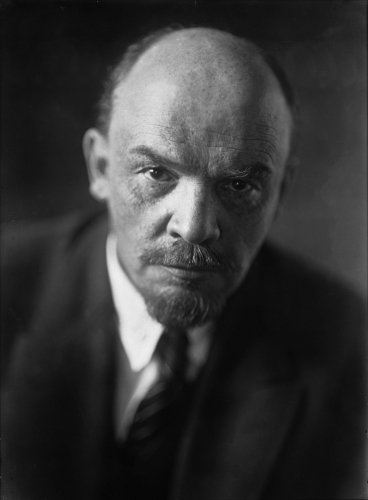

 del.icio.us
del.icio.us
 Digg
Digg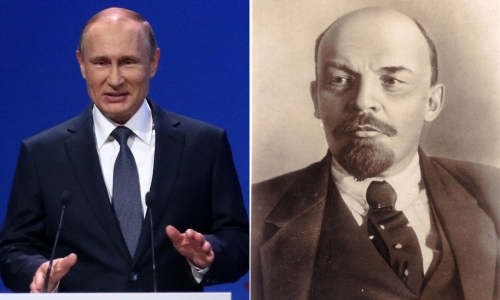
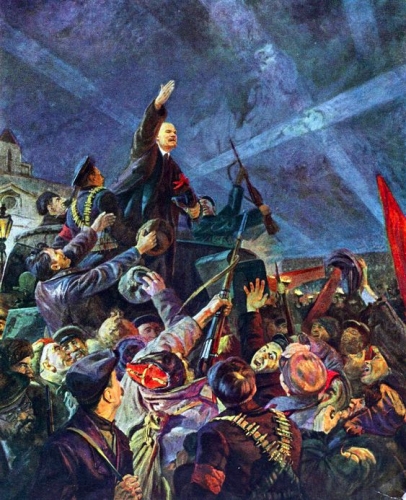
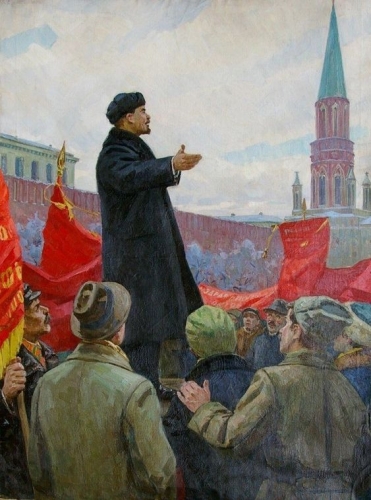

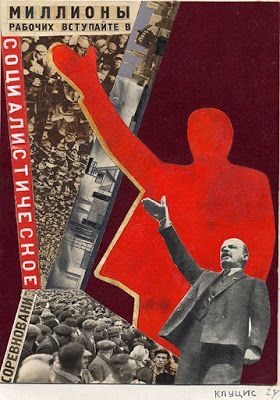
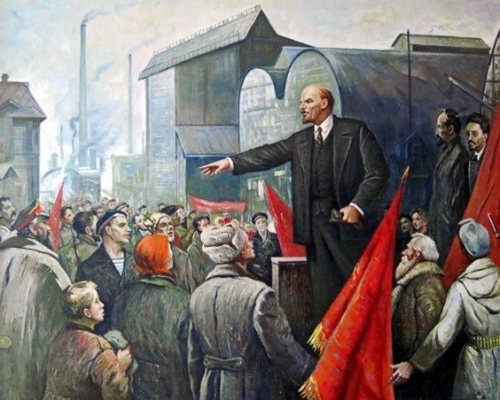

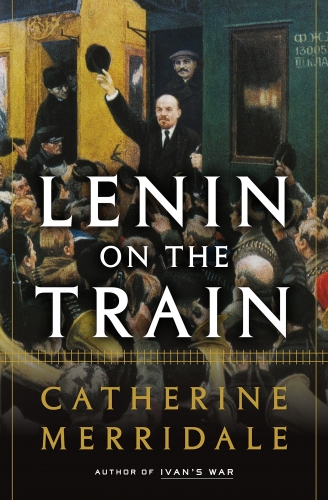
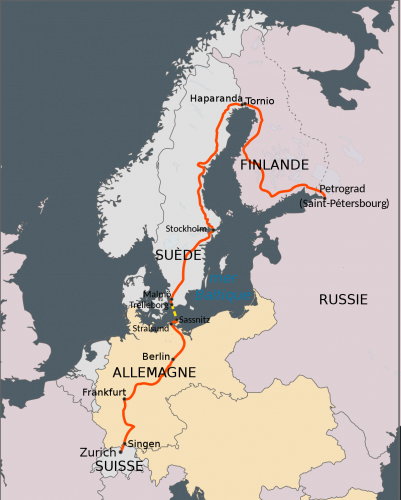

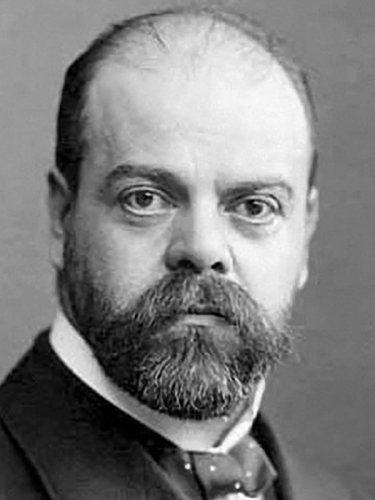
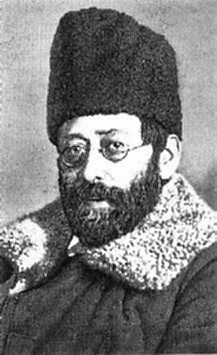 Lors d'une discussion entre les exilés russes à Zurich le 19 mars, le dirigeant menchevik, Julius Martov, a suggéré de rechercher un accord avec le gouvernement allemand pour les laisser passer par l'Allemagne. Ils pourraient ensuite traverser la mer Baltique jusqu'en Suède, et atteindre la Russie via la Finlande. En contrepartie, a proposé Martov, ils accepteraient de demander la libération des prisonniers de guerre allemands à leur arrivée en Russie.
Lors d'une discussion entre les exilés russes à Zurich le 19 mars, le dirigeant menchevik, Julius Martov, a suggéré de rechercher un accord avec le gouvernement allemand pour les laisser passer par l'Allemagne. Ils pourraient ensuite traverser la mer Baltique jusqu'en Suède, et atteindre la Russie via la Finlande. En contrepartie, a proposé Martov, ils accepteraient de demander la libération des prisonniers de guerre allemands à leur arrivée en Russie.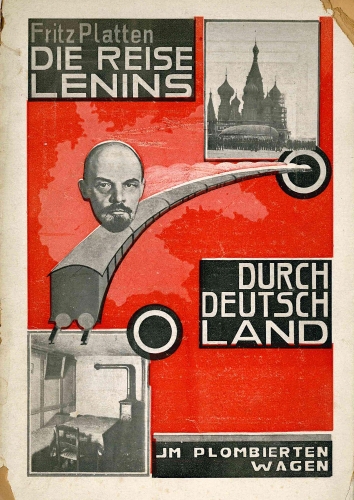
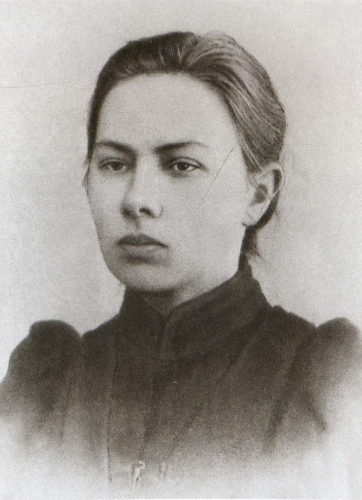
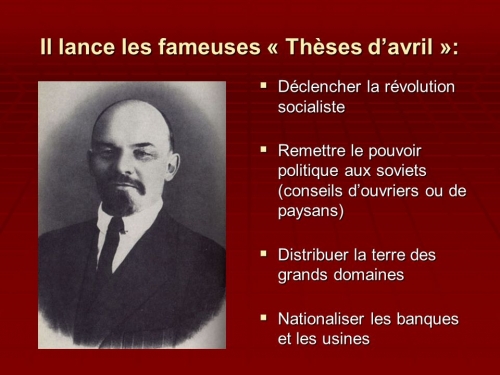
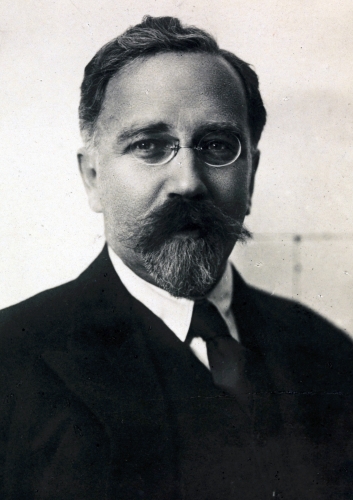
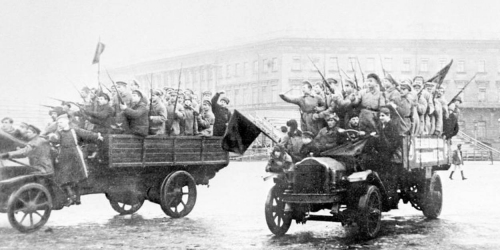

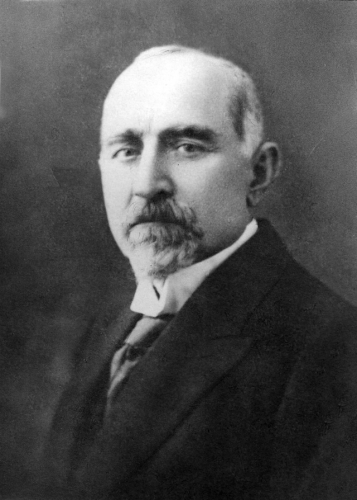
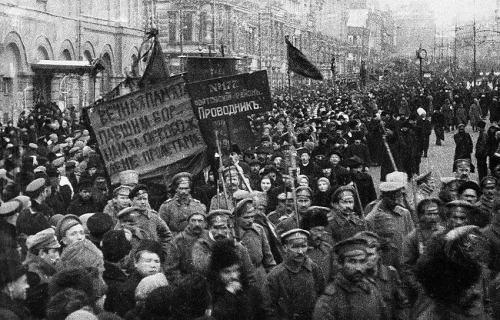
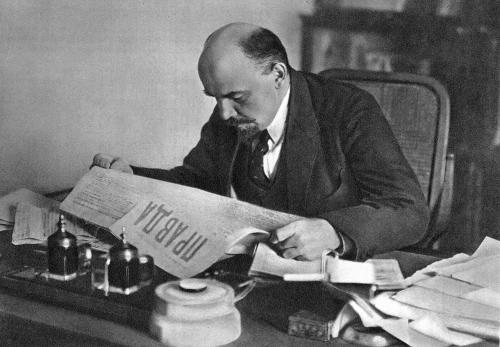
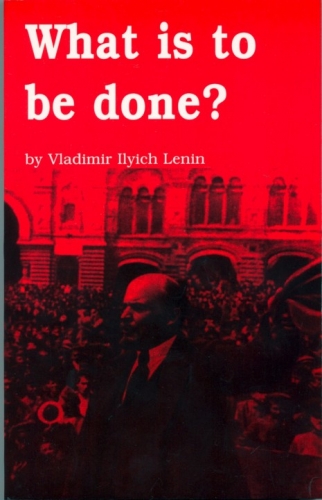 Like the French Revolution, the Russian is also marked by an alliance of philosophy with fanatical enthusiasm. And this fanaticism of the Lenin cult has found its intellectual fans up into the present—one thinks of the hypersensitive aesthetician Walter Benjamin, of the communist model poet Bert Brecht, of the philosopher Jean-Paul Sartre, then the student movement of ’68 and the present-day left. We owe the most extreme formulation of the cult to Ernst Bloch: “Ubi Lenin, ibi Jerusalem,” where Lenin is, there is salvation, the kingdom of freedom and eternal childhood in God. Ernst Nolte was thus right when he characterized Marxism as “the last faith in Europe.” And this faith was “organized” by Lenin.
Like the French Revolution, the Russian is also marked by an alliance of philosophy with fanatical enthusiasm. And this fanaticism of the Lenin cult has found its intellectual fans up into the present—one thinks of the hypersensitive aesthetician Walter Benjamin, of the communist model poet Bert Brecht, of the philosopher Jean-Paul Sartre, then the student movement of ’68 and the present-day left. We owe the most extreme formulation of the cult to Ernst Bloch: “Ubi Lenin, ibi Jerusalem,” where Lenin is, there is salvation, the kingdom of freedom and eternal childhood in God. Ernst Nolte was thus right when he characterized Marxism as “the last faith in Europe.” And this faith was “organized” by Lenin.

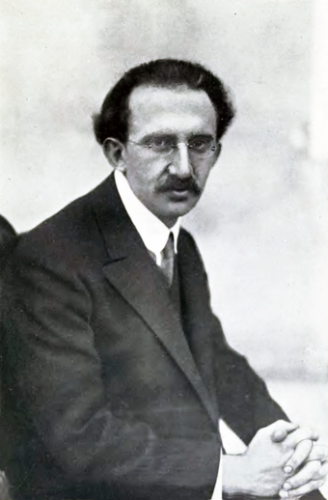 The self-incriminations before the tribunals, which were not forced by torture, but also those in numerous writings of communist intellectuals, belong to the great moral scandals of history. One understands them better when one sees how Bolshevism abrogated the moral verities of bourgeois society. Lukács spoke of a “second ethics” that would forcibly and cruelly create clarity in the confused world of the humane. The terrorist is the Gnostic of the deed, who takes crime upon himself as a necessity in the struggle against capitalism. Lukács dedicated his essay “Tactics and Ethics” to the young generation of the Communist Party: the terrorist as hero sacrifices his ego on the altar of the idea that presents itself as an order issued from the world historical situation. And in a letter to Paul Ernst from May 4, 1915, one reads about the revolutionary: “Here—to save the soul—the soul itself must be sacrificed: one must, out of a mystical ethics, become a cruel political realist.” Such is in keeping with the syndrome that Manès Sperber called treason out of loyalty, that is, denial of one’s own standards and convictions, intellectual masochism, and obsequious ingratiation with the “working class.”
The self-incriminations before the tribunals, which were not forced by torture, but also those in numerous writings of communist intellectuals, belong to the great moral scandals of history. One understands them better when one sees how Bolshevism abrogated the moral verities of bourgeois society. Lukács spoke of a “second ethics” that would forcibly and cruelly create clarity in the confused world of the humane. The terrorist is the Gnostic of the deed, who takes crime upon himself as a necessity in the struggle against capitalism. Lukács dedicated his essay “Tactics and Ethics” to the young generation of the Communist Party: the terrorist as hero sacrifices his ego on the altar of the idea that presents itself as an order issued from the world historical situation. And in a letter to Paul Ernst from May 4, 1915, one reads about the revolutionary: “Here—to save the soul—the soul itself must be sacrificed: one must, out of a mystical ethics, become a cruel political realist.” Such is in keeping with the syndrome that Manès Sperber called treason out of loyalty, that is, denial of one’s own standards and convictions, intellectual masochism, and obsequious ingratiation with the “working class.”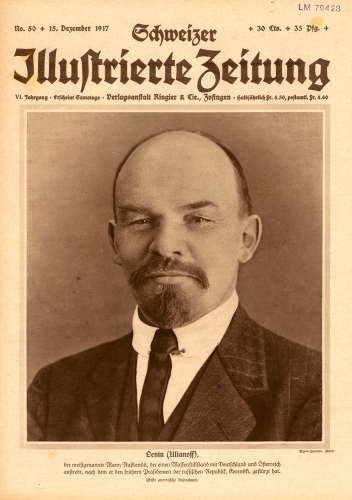
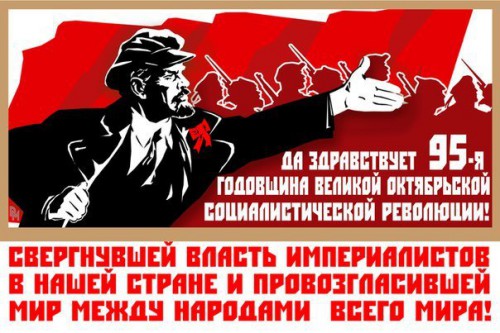
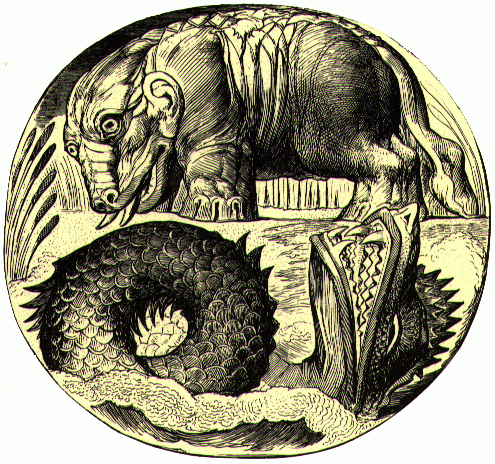
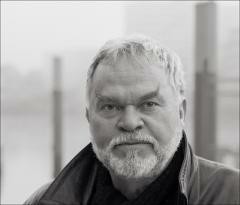 Bei der Rezeption der politikwissenschaftlichen Theoriegeschichte nach 1968 kam niemand an den Gutachten und Theorieentwürfen von Carl Schmitt vorbei. Dieser Grenzgänger zwischen bürgerlicher Demokratie und Diktatur hatte durchaus Berührungspunkte mit Karl Marx und W. I. Lenin. Allein sich zu bemühen, einen „Begriff des Politischen“ im Zeitalter der Krisen, Revolutionen und Weltkriege zu entwerfen, der den Ausnahmestaat oder „Sondergesetze“ zum Inhalt hatte, erinnerte an die vielfältigen, marxistischen Diskussionen über den Charakter und das Ziel der „Diktatur des Proletariats“. Schon deshalb gehörte Carl Schmitt zur geheimnisvollen „Theoriegeschichte“, die in den sechziger und siebziger Jahren im Zentrum der akademischen und politischen Diskussionen stand.
Bei der Rezeption der politikwissenschaftlichen Theoriegeschichte nach 1968 kam niemand an den Gutachten und Theorieentwürfen von Carl Schmitt vorbei. Dieser Grenzgänger zwischen bürgerlicher Demokratie und Diktatur hatte durchaus Berührungspunkte mit Karl Marx und W. I. Lenin. Allein sich zu bemühen, einen „Begriff des Politischen“ im Zeitalter der Krisen, Revolutionen und Weltkriege zu entwerfen, der den Ausnahmestaat oder „Sondergesetze“ zum Inhalt hatte, erinnerte an die vielfältigen, marxistischen Diskussionen über den Charakter und das Ziel der „Diktatur des Proletariats“. Schon deshalb gehörte Carl Schmitt zur geheimnisvollen „Theoriegeschichte“, die in den sechziger und siebziger Jahren im Zentrum der akademischen und politischen Diskussionen stand.